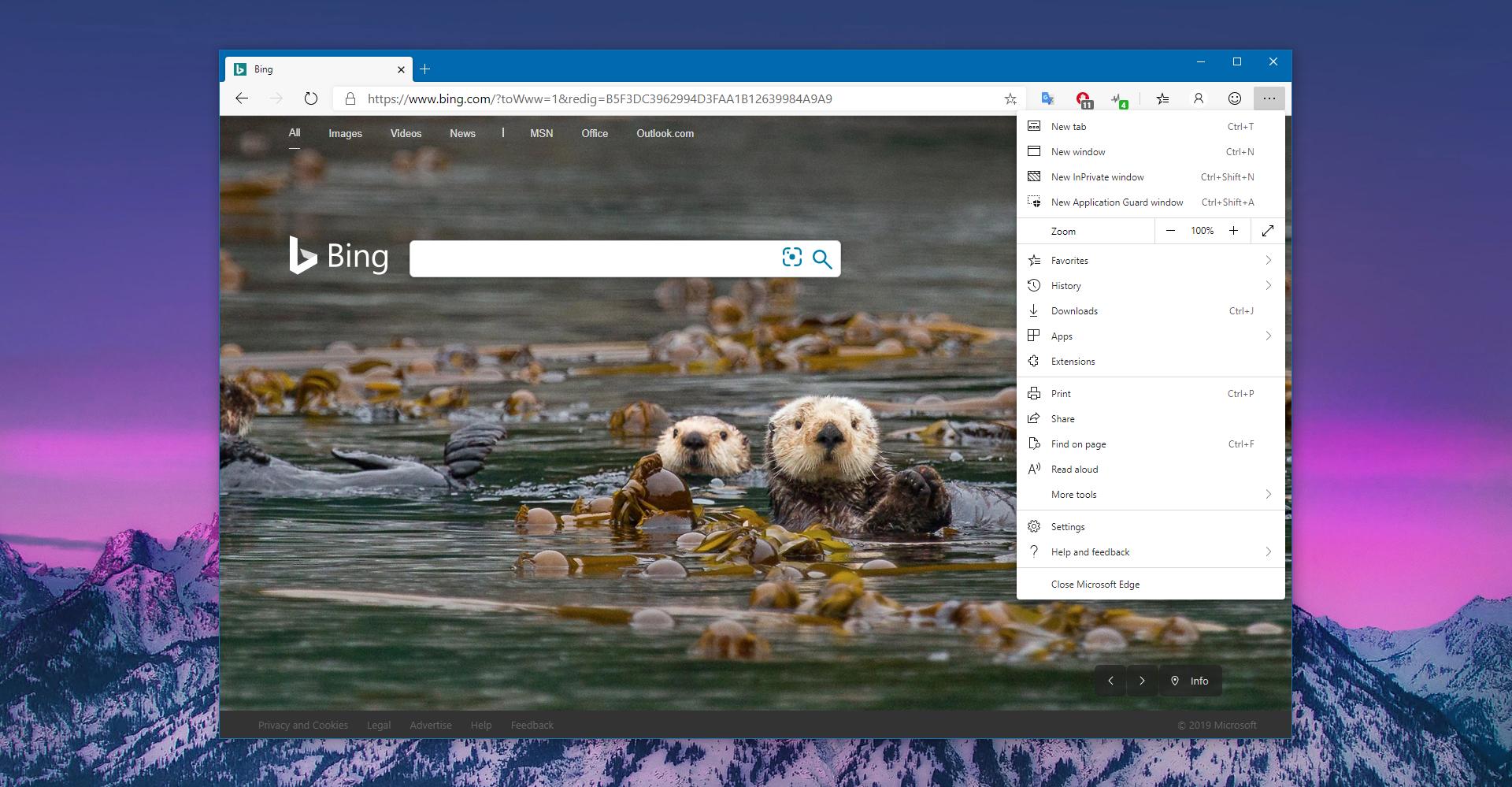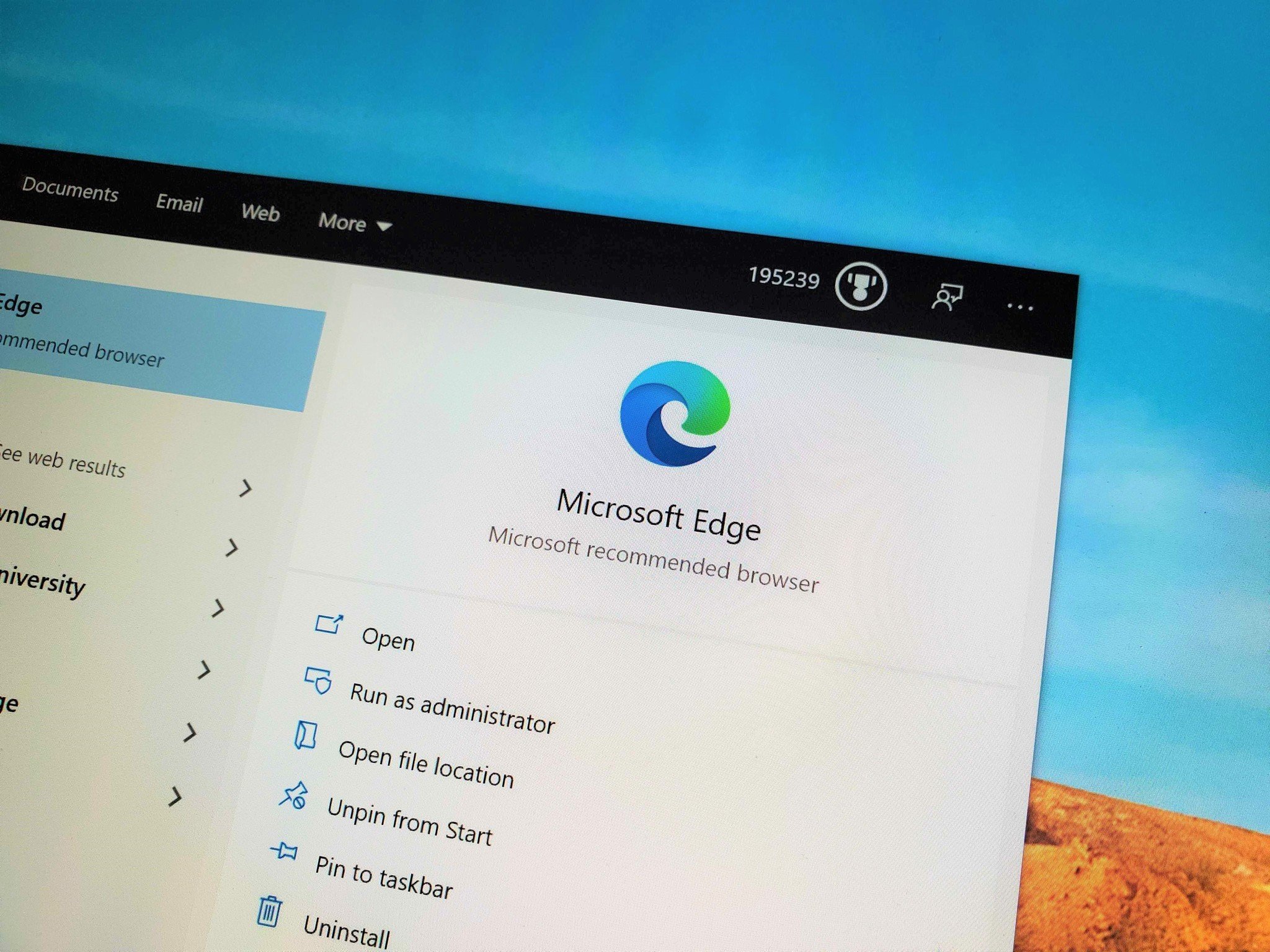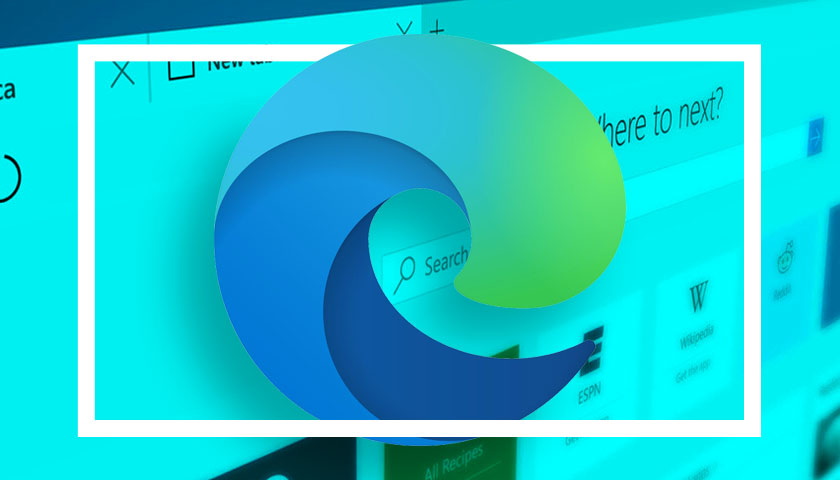Edge On Linux
Edge draws its own window bar on Linux, with its own window control icons. While the pale-grey bar Edge wears is not terribly distracting (unlike Vivaldi’s gaudy red window frame) some kind of GTK inheriting/colour detection (even if only an option) would be welcomed, I’m sure. Microsoft is planning to launch a preview version of its Edge browser for Linux next month. After officially confirming plans for Edge on Linux earlier this year, Linux users will be able to. This video looks at the Linux developers release of Microsoft Edge. You can install it via.deb or.rpm.#Microsoft #Edge #Linuxhttps://www.microsoftedgeinsid. Install Microsoft Edge in Arch Linux and Manjaro (via compilation) Open a terminal in Arch Linux. This method is a process of compiling the microsoft-edge-dev.git. This requires the base-devel and git package. It turns out that Microsoft Edge is only available with operating system like Windows 10 and a browser application with few mobile devices. For additional information, we recommend checking the article about Microsoft Edge feature, compatible operating system and functions. Don't hesitate to reach out if you have other concerns.
When Microsoft announced plans to rebase its Edge browser on Chromium the chance of a dedicated Linux build went from pipe-dream to inevitability.
Chromium’s cross-platform codebase makes it the ideal foundation on which to build out a modern web browser. Three years since rumours first began swirling, Microsoft Edge for Linux is not only confirmed but it’s almost ready for testing.
Being the impatient sort we installed the Microsoft Edge Developer build on Ubuntu 20.10. This post will stop short of being a “review” per se (you’ll hear throughout this post: this is not a stable build) but I’ve included lots of screenshots and some general thoughts about how well the browser integrates with the default Ubuntu desktop.
Microsoft Edge for Linux Developer Build
Did I ever think I’d be writing a post about Microsoft’s flagship web browser being available for Linux? Heck no! And yet, here we are!
Many teeth have been gnashed over the point and purpose of a Microsoft-made web browser on a Linux platform. Some see Edge’s arrival as the latest bouquet in Microsoft’s blooming relationship with Linux and all things open source, but others? Well, they smell suspicion…
For their part Microsoft says its “motive” in bringing Edge to Linux is simply about making its technologies and services available to more users. Yes, even if they don’t run its Windows software (which is, after all, just one product/service in its portfolio).
Microsoft’s heavy presence in business, enterprise, and (increasingly) developer communities also plays a part. People who have to use Microsoft services at work get the chance to use the tech they’re familiar with and/or sync’d up with at home, on their Linux laptop, if they want.
But is there anything to interest casual Linux users too?
Edge is more than a Chrome clone; Microsoft had imbued Edge with custom touches and novel feature integrations. While many of these may sound superfluous to power-users they do, on other systems, round out the browser’s feature set.
Or to put it another way: Edge is a mass-market, all-user browser. It’s not aimed exclusively at any one audience, be that web developers, power users, or computer noobs.
So some of its “Added Value” may sound minor, trivial, or frivolous. Take Collections, for instance. This is essential just a souped-up bookmarking tool that lets you save content — not just web links — directly to the browser for future use.
You can create multiple collections in Edge, rename them, add notes to them, and export all of that data to other services (or copy of the links to the system clipboard).
On to integration. The Edge app launcher in the Ubuntu Dock does have a small right-click quicklist. This offers fast access to options to open a new window, a new incognito window, or quit the browser.
Sadly the Edge browser (like other Chromium browsers) does not use the system title/window bar by default. Edge draws its own window bar on Linux, with its own window control icons.
While the pale-grey bar Edge wears is not terribly distracting (unlike Vivaldi’s gaudy red window frame) some kind of GTK inheriting/colour detection (even if only an option) would be welcomed, I’m sure.
And Microsoft Account sync does not work in this build — but if you read this site regularly that will not be a surprise.
The good news is that many of Edge’s other features — yes, snarkypants, it does have some! — are present.
We’ve already touched on Collections, but there’s also an ‘immersive reader’ mode; integration with Bing; optional dark mode; web screenshot tool; and a variety of different New Tab page layouts (ranging from cluttered to calm);
You can install Chrome extensions on Edge easily. The first time you visit the Chrome Web Store using the browser it asks if you want to enable Chrome extension installs.
While I can’t vouch for the entirety of Chrome’s extension catalogue, all of the extensions I tried (yes, including the omg! ubuntu! one) worked as expected, as you can see above!
For an early version of Edge for Linux the browser feels fairly robust. It didn’t crash once during my test. Everything I asked of it, it did. From HD YouTube playback, to translating a Portuguese web page, to letting me play web games.
The app is fast to open and responsive in use. If Microsoft can maintain the friction-free feel it could win some new fans. Firefox isn’t slow, but a Chromium-based backend just feels so much faster in use (to me, anyhow).
Download Edge for Linux Dev Build
Want to try things out for yourself? We have a guide on how to install Edge on Ubuntu.
It’s not yet clear when Edge for Linux will go stable, but Microsoft has formally announced that it’s in developer preview. You can Linux builds on this Microsoft repo page.
If you jump on Edge for some early-bird testing just keep in mind that it is development software. It’s not finished. It’s not stable. Heck, it’s not even fully functional. Ergo, don’t get irate about any issues you encounter!
Microsoft Edge for Linux is now a thing, so in this post we show you how to install the browser on Ubuntu, Linux Mint, and any related Linux distributions.
In guide we show you how to install Microsoft Edge on Ubuntu (or any Ubuntu-based Linux distribution, like Linux Mint) in two ways: graphical (GUI) method, and command line (CLI) method.
It doesn’t matter which method you choose as you will download and install the exact same version of Microsoft’s new-fangled browser. Plus, both methods set things up so that you get future updates as and when they’re released, automatically.

Microsoft Edge is based on Chromium, the open-source browser engine developed (though not exclusively) by Google. Any website, web app, or web service that works in any Chromium-based browser, such as Google Chrome, will work in Edge too.
Even better: you can install Chrome extensions in Edge too (though Microsoft maintains its own extension hub for browser add-ons).
Read our hands on with Edge for Linux development builds for a broader overview on what works, what doesn’t, and what you should keep in mind if you plan to use it otherwise.

How to Install Edge Browser on Ubuntu
Keep in mind that Microsoft Edge for Linux is in developer preview. It is not “stable”. It is not even a beta. Some features (like browser sync) are currently unsupported on Linux. Are there bugs? Yup. Will it crash? Quite possibly!
Please note: this article is about how to install Edge on Ubuntu, not why you should install it. You decide which software you use on your system. And if you don’t want Edge? That’s fine! But you probably won’t be reading a “how to” guide on the topic!
Graphical/GUI way
Installing Edge using a graphical user interface is easy as Microsoft provide official installer packages for Ubuntu and Fedora-based distros. You can use these builds to install the browser on your system using your distribution’s package manager.
1.Go to Microsoft Edge Download Page
Solid Edge On Linux
In a web browser open the official Microsoft Edge download page. There you’ll find two builds for Linux. Chose the ‘Linux (.deb)’ option for Ubuntu.
2. Download Edge for Linux
Choose to save the .deb package to your Downloads folder (or any other. directory you can access easily). If you’re using Firefox you can check the “Save File” option to do this.
3. Double click on the installer
Let the download complete then use your file manager to find the Edge Linux installer. Finally, double-click on the saved file to start installing and follow the on-screen prompts.
When you install using the official installer the Microsoft Edge repository is added to your system’s list of software sources. You can upgrade to new versions of the browser as they’re released using the regular Software Updater tool.
4. Open Microsoft Edge.
Edge On Linux Mint
Let the install finish up then open the browser from the Applications grid (or whatever app menu, launcher, etc you use on your system.
Terminal/CLI way
Prefer to install software from the command line? We got you covered. Just copy/paste the following commands in to your terminal emulator of choice.

First: the set-up script. This adds the Microsoft Edge repo to your system, and imports the Microsoft GPG key to authenticate packages (so that you can be sure they are what they say they are):

Second step: run this command to actually install Microsoft Edge:
Once done, launch the browser from your favourite app launcher, or run microsoft-edge-dev from a command prompt.
How to Uninstall Edge
So you installed Edge. Grand. And you try it out. Awesome. But what happens if you want to remove it? Well, it’s easy to uninstall Microsoft Edge using the command line.
Just open a new Terminal window and run:
Alternatively you can open the Ubuntu Software app, search for ‘edge’ by name, click the result, and hit the ‘remove’ button.
Simple!
Summary
Edge On Linux
That’s it; you learned how to install Microsoft Edge browser on Ubuntu, Linux Mint, and other distributions in this article. All that’s left for you to do now is to open the browser up and start surfing the web!
Install Edge On Linux Mint

It remains to be seen if Edge will find a big enough audience on Linux to sustain itself. The browser is up against stiff competition from the likes of Google Chrome, Mozilla Firefox, and Vivaldi.
Ms Edge On Linux
While most Linux users will shudder at the thought of using it, I think it’s great to have the choice of using Edge on Linux.
